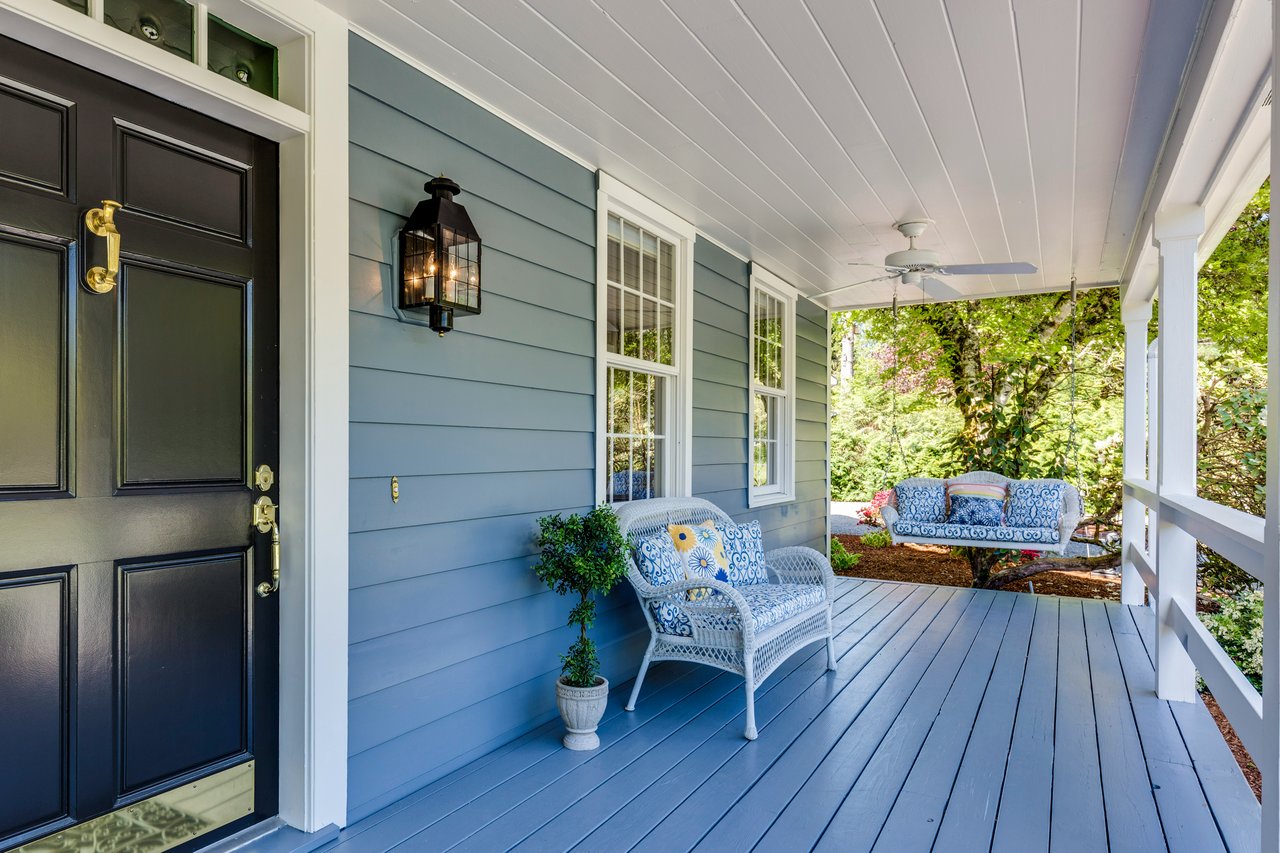When you're shopping for a new home, the excitement of touring potential properties can
sometimes cloud your judgment. However, overlooking key red flags during a home tour could
lead to costly repairs, unexpected headaches, or regret down the line. To make the best
decision for your future, it's crucial to keep your eyes peeled for warning signs that might
indicate deeper issues. Here's what to look for and why these details matter.
1. Signs of Water Damage
Water damage can lead to expensive repairs and long-term problems like mold. During a home
tour, keep an eye out for:
● Stains or discoloration: Check ceilings, walls, and around windows for yellow or brown
stains that could indicate past or current leaks.
● Musty smells: A persistent damp odor might suggest hidden water issues.
● Warped or buckled flooring: This could be a sign of water intrusion.
● Mold or mildew: Visible mold, especially in bathrooms, basements, or under sinks, is a
clear red flag.
If you spot any of these signs, ask the seller or agent about the issue and whether it has been
addressed. Consider bringing in a home inspector to verify the extent of the problem.
2. Foundation Cracks and Structural Issues
A solid foundation is critical to a home's stability. Structural problems can be expensive and
challenging to fix. Be on the lookout for:
● Cracks in walls or ceilings: Hairline cracks might be normal settling, but large cracks,
especially near doors and windows, could indicate foundation movement.
● Doors or windows that stick: Difficulty opening or closing them could suggest shifting
or settling.
● Uneven floors: Walking through the home, take note of any sloping or uneven surfaces.
If these issues are present, consult a structural engineer for a professional assessment before
proceeding.
3. Roofing Problems
A roof replacement can be a significant expense. During your tour, look for:
● Missing or damaged shingles: These can lead to leaks and further deterioration.
● Sagging rooflines: This might indicate structural issues or water damage.
● Water stains in the attic: If you’re able to access the attic, check for signs of leaks or
light seeping through the roof.
Ask about the age of the roof and whether it has been maintained or recently replaced.
4. Outdated or Faulty Electrical Systems
Electrical issues can be a safety hazard and may require costly upgrades. Watch for:
● Old or exposed wiring: Knob-and-tube or aluminum wiring can be dangerous and may
not meet current code standards.
● Flickering lights: This could indicate an overloaded electrical system or faulty wiring.
● Insufficient outlets: A lack of outlets, especially grounded ones, might mean the
electrical system is outdated.
A professional electrician can provide insights if you suspect any issues.
5. Plumbing Problems
A functioning plumbing system is essential for comfort and convenience. Warning signs include:
● Low water pressure: Test faucets and showers to check the water flow.
● Leaking pipes or fixtures: Look under sinks and around toilets for leaks or corrosion.
● Slow drains: This might indicate clogs or more serious sewer line issues.
● Stains under sinks: Water spots on the cabinet floor can be a red flag.
Ask the seller about the age of the plumbing system and whether it has been updated.
6. Pest Infestations
Unwanted critters can cause extensive damage to a home. During your tour, inspect for:
● Droppings or nests: Look in basements, attics, and cabinets.
● Chewed wood or wires: This could indicate rodents or termites.
● Holes in walls or floors: Small openings can be an entry point for pests.
● Dead insects near windows: This might suggest a persistent pest problem.
A professional pest inspection can confirm whether pests are present and recommend
solutions.
7. Heating and Cooling Systems
HVAC systems are expensive to repair or replace, so ensure they’re in good condition. Look for:
● Unusual noises: Loud or strange sounds from the furnace or AC unit could indicate
mechanical issues.
● Age of the system: Ask the seller about the system’s age and maintenance history.
● Uneven temperatures: Rooms that feel significantly warmer or cooler than others might
signal HVAC problems.
Request service records to ensure the system has been properly maintained.
8. Poor Ventilation
Proper ventilation is crucial for indoor air quality and preventing moisture buildup. Watch for:
● Condensation on windows: This could indicate poor ventilation or high humidity levels.
● Peeling paint: Excess moisture might be to blame.
● Stuffy or stale air: Poor airflow can lead to problems like mold or increased energy
costs.
Ensure that vents, fans, and windows are functional and well-placed.
9. Neighborhood and Location Concerns
Even if the home itself is in great shape, the surrounding area matters. Consider:
● Traffic noise: Visit the property at different times of the day to gauge noise levels.
● Proximity to amenities: Check the distance to schools, stores, and public
transportation.
● Neighboring properties: Look for signs of neglect or ongoing construction that could
affect your quality of life.
Researching the neighborhood thoroughly can help you avoid surprises after moving in.
10. DIY Renovations Gone Wrong
Amateur home improvements can lead to hidden problems. Be cautious of:
● Poor craftsmanship: Uneven tile, mismatched paint, or shoddy finishes could indicate a
lack of attention to detail.
● Unpermitted work: Ask for documentation of renovations to ensure they comply with
local building codes.
● Inconsistent styles: A mix of modern and outdated elements might signal partial,
unfinished upgrades.
Bring up any concerns with the seller or agent, and verify the quality of major changes.
11. Environmental Hazards
Environmental issues can pose health risks or require costly remediation. Be aware of:
● Asbestos: Common in older homes, especially in insulation or flooring.
● Lead-based paint: Found in homes built before 1978 and hazardous if disturbed.
● Radon levels: Ask whether the home has been tested for this odorless, radioactive gas.
If you’re unsure about these hazards, consider professional testing for peace of mind.
Conclusion
A home tour is your chance to uncover potential issues before making an offer. By staying
vigilant and asking the right questions, you can avoid costly surprises and make a confident
decision. Remember, it’s always a good idea to hire a professional home inspector for a
thorough evaluation.
Looking to learn more about navigating the homebuying process? Explore additional tips and
resources to ensure you’re fully prepared for your next big step.
Pacific Sothebys International Realty✨ | Maria Woods DRE#02037792
Let’s connect ☎️619.496.1250




